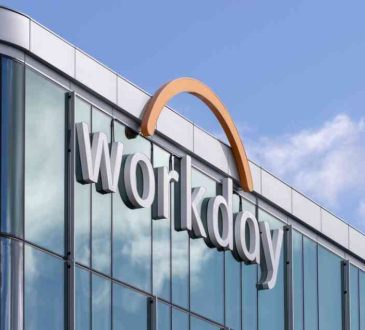How CEOs Are Thinking About Hybrid Work Today

Almost overnight, the pandemic ushered in new and unfamiliar workplace practices. The change was, and is, historic, but even years later, there is still no consensus among company leaders about the value and benefits of hybrid work.
It was unthinkable a decade ago, but today, many workers are setting their own hours and using collaboration tools to work with colleagues in remote locations. Some companies are even experimenting with shorter workweeks.
However, these new arrangements also raise concerns about productivity, employee engagement, and how to support employee quality of life while building a workplace culture of trust and collaboration.
Deloitte has surveyed many leaders around the globe to get their thoughts on hybrid work. While their views vary, the sum of their insights and suggestions may be valuable for other leaders as they figure out what balance or path is best for their organization.
The Variety of Perspectives on Hybrid Work
For many workers, hybrid work is now a fact of life. A Deloitte survey of consumer attitudes toward “digital life” showed that more than half of employed adults work from home at least part of the time, with one-third of them averaging three days in-office and 2.6 days working at home.
What CEOs feel about these arrangements is often another story. A Fortune/Deloitte CEO Survey from last fall (2023) asked 104 leaders across 26 industries their feelings on hybrid work:
- 27% said that, on average, three days per week is the ideal amount of time for workers to be in the office or at client sites.
- 22% wanted workers on-site five days per week.
- 6% thought that two days per week was ideal.
- 24% said the hybrid arrangement varies by job function.
- 3% of CEOs said they leave it up to workers to decide.
Yet, what exactly is hybrid work for? Is it about improving work-life balance, productivity, employee retention, or something else?
The debate is far from settled, and many leaders see upsides and downsides. For example, in the Fall 2022 Fortune/Deloitte CEO survey, more than half of respondents expected that long-term, hybrid work would make employees less engaged and less loyal.
However, in that same 2022 survey executives reported plans to use new engagement tools to increase loyalty for employees who don’t depend on working in the office, thus enabling a flexible workplace. Many leaders perhaps feel they need to accommodate hybrid work, whatever their feelings about it.
CEO’s Top Hybrid Concerns: Engagement, Retention, Productivity
Even as companies try to accommodate hybrid work, many leaders worry about other possible negative impacts. Since June 2020 (the start of the Fortune/Deloitte CEO Survey), CEOs have consistently been concerned about a shortage of skilled labor in the marketplace. While those sentiments have likely shifted with current events, CEOs are still worried about workforce engagement, with many citing it as one of their biggest challenges. In particular, they mention the difficulty in finding ways to get people back into the office and designing workplaces to keep people engaged.
Others also recognize that they risk losing their workforce if they don’t offer hybrid work. One CEO cited “retaining talent and maintaining competitiveness and culture as we work in a hybrid environment” as a significant concern.
Leaders also worry about productivity and company culture. In January 2022, one CEO described “maintaining culture and cohesion in a largely virtual world” as a significant issue. In the Fall 2023 survey, another CEO cited “people, culture, and managing remote workforce” as a top challenge.
The Sweet Spot?
If hybrid work arrangements are here to stay, as appears to be workers’ preference, the solution is finding the right balance. Research suggests that a few days in the office—from one to two days—may be the sweet spot.
A recent working paper from Harvard Business School found that spending one or two days in the office resulted in “more emails sent, a higher number of email recipients, and increased novelty of work products” while also providing people with greater work-life balance and connections with colleagues.
Even if studies suggest that hybrid is not a drag on productivity, some executives prefer more face time from employees. But whatever their preferences, a growing share of workers want hybrid work and say they’re having more success balancing work and family responsibilities. A Deloitte study on consumer technology trends shows that hybrid workers expressed higher job satisfaction, and at least eight in 10 said their relationships with relatives, co-workers, and managers have improved or stayed the same compared to when they worked on-site full-time.
In the end, who makes the decision? A recent survey by Deloitte of hybrid workers found that 54% said it was their employer’s decision, while 30% decided with their employer.
What to Think About When Determining Your Work Arrangement
There’s no “one size fits all” strategy. So, how can leaders find the path forward?
Consider your company values when determining work patterns. Not all organizations have the same purpose, and hybrid work arrangements should reflect that mission.
One example: Vincent Firth, consulting managing director and co-leader of Deloitte’s Chief Executive Program, mentioned a CEO who felt strongly about corporate divisions working in-office every day, considering most of the employees in the organization are front-line workers who are required to work on-site every day, often in demanding industrial spaces.
For leaders who are trying to decide how hybrid work fits into business priorities, here are some things to consider:
- Inspire trust in your employees. Use data and analytics to make decisions that build trust with your workforce and be transparent about how you reach your conclusions.
- Champion your employees’ well-being. Don’t underestimate the power of a public declaration of CEO support for well-being, especially when teams are remote. Make it a habit to report on your organization’s progress and share how you practice well-being in a hybrid environment.
- Embrace flexibility. The past few years have taught us how much and how quickly workplace conditions can change. Make sure you can adapt to the needs of your people as they evolve.
In one form or another, the hybrid workforce will be a part of our world for the foreseeable future. How it works for your organization and employees depends on your circumstances, company structure, and values. There is no one-size-fits-all approach to hybrid work – perhaps even within an organization. Explore how your company’s values can be strengthened by hybrid work.
Written by Benjamin Finzi, Managing Director, Deloitte Services LP, Chief Executive Program, and Dr. Elizabeth Molacek, Research and Eminence, Chief Executive Program. Elizabeth M. Molacek, PhD is a researcher and author whose work focuses on human experience. She has over 15 years of experience leading international research teams in higher education, non-profits, and the private sector. In her role with the Chief Executive Program, Elizabeth directs research initiatives that support the CEO and other executive leaders. Prior to Deloitte, Elizabeth worked at several US museums including the Fogg Museum at Harvard University where she designed immersive learning experiences. She has also been on faculty at several US universities where she taught graduate courses on research methods, persuasive communication, and visual messaging. Elizabeth earned a PhD and MA at The University of Virginia and completed her postdoctoral training at Harvard University.
Have you read?
The world’s largest economies in 2023.
Ranked: Safest Countries in the World, 2023.
Countries With the Most Female Billionaires, 2023.
Economy Rankings: Largest countries by GDP, 2023.
The Global Passport Index: The World’s Most Powerful Passports.
Richest countries in the world by GDP per capita in 2023.
Add CEOWORLD magazine to your Google News feed.
Follow CEOWORLD magazine headlines on: Google News, LinkedIn, Twitter, and Facebook.
Copyright 2024 The CEOWORLD magazine. All rights reserved. This material (and any extract from it) must not be copied, redistributed or placed on any website, without CEOWORLD magazine' prior written consent. For media queries, please contact: info@ceoworld.biz








